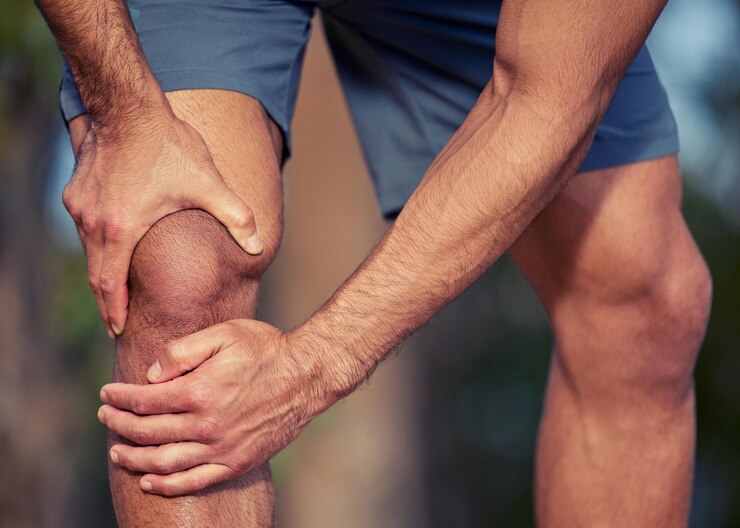Knee osteoarthritis is a painful condition caused by loose fragments of cartilage in the joints. The resulting pain can prevent the smooth movement of the knee. You may experience “locking” or “sticking” of the knee during movement or hear clicking, squeaking, or grinding sounds. If you experience any of these symptoms, you should see a doctor for a diagnosis. Other symptoms of arthritis include buckling and weakness of the knee. Most people with this condition also notice increased knee or joint pain with weather changes. Your doctor can order diagnostic tests to help determine the cause of your pain.
Symptoms
The symptoms of knee osteoarthritis (OA) vary depending on the stage of the disease. Patients may experience pain after walking for a long period in the early stages. They may also experience joint stiffness, and X-rays will show changes to the joint space caused by cartilage degeneration. In the latter stages, patients may develop bone spurs.
Osteoarthritis begins when the cartilage in the knee becomes thin and weak. At some point, the cartilage may even be completely worn away. Regardless of the type of osteoarthritis, it will eventually lead to pain and difficulty moving the joint. Unlike other types of arthritis, osteoarthritis is not reversible. While symptoms may occur in any part of the knee, they usually begin at the knee joint. Pain often occurs at night and after heavy exertion.
Causes
While there is no cure for knee osteoarthritis, painkillers can alleviate pain and improve quality of life. Doctors usually prescribe creams that contain non-steroidal anti-inflammatory drugs, such as ibuprofen or capsaicin, to reduce pain and inflammation. They may also prescribe paracetamol.
As we get older, the strength of our bones decreases, accelerating the breakdown of joints. In addition, women lose muscle mass and are more susceptible to knee osteoarthritis. Having excess weight and being overweight increases the likelihood of knee OA. Some of the symptoms of knee OA include pain with activity, swelling, and warmth of the knee. Cracking or creaking sounds in the knee can also be a sign of osteoarthritis.
Osteoarthritis is usually a progressive disease of the joints involving cartilage and connective tissue breakdown. Most cases occur during middle age or older, but certain risk factors increase the likelihood of developing the disease earlier. Women over the age of 55 are more likely to develop the condition than men. Obesity is also associated with osteoarthritis, as obese individuals place more pressure on their knee joints. Physical trauma to the knee can also increase the risk of developing the condition.
Treatment options
There are several treatment options for knee osteoarthritis (OA) in younger patients. These include pharmacological interventions, over-the-counter drugs, and injections. Many of these options have proven effective in reducing pain and easing symptoms. Nevertheless, these methods are with risks. For example, some of these drugs may damage cartilage, soft tissue, and bone. In addition, they have not been shown to improve stability or other important physiologic issues.
If your osteoarthritis is mild, nonpharmacological treatments such as weight loss may help alleviate your symptoms. Exercises that strengthen the muscles surrounding the joints can also help prevent tissue damage. In addition, a brace can help stabilize your knee.
Home remedies
The pain associated with knee osteoarthritis can be reduced by following a few home remedies. One of the first steps is elevating the affected leg. This will promote circulation and reduce swelling. Another way to reduce pain is to apply hot or cold compresses to the affected knee. Both heat and cold relieve pain by relaxing muscles. You can use hot or cold compresses on the affected knee several times daily. Alternatively, you can soak the knee in an Epsom salt bath. The soaking should last about 20 to 30 minutes.
Another natural treatment for knee osteoarthritis is lemon juice. It can be applied topically to the affected area or consumed as a tea. Either way, lemons contain powerful anti-inflammatory properties. Coconut oil can also help relieve pain and inflammation. Apply a few drops on the affected knee twice daily, allowing it to absorb into the skin.
Surgery
Surgery for knee osteoarthritis can help relieve the pain and stiffness caused by osteoarthritis. Patients can expect to return to normal activities in three to six weeks. Some patients can return to sports activities six months after surgery. The procedure may require an overnight stay. During the recovery process, patients will be given pain medication. They will also be instructed on how to take care of the wound. Post-operative instructions will include exercises to improve knee strength and range of motion.
The study included 180 patients with osteoarthritis of the knee who were aged 40 years or older. The patients underwent arthroscopic debridement if medical treatment failed to relieve their symptoms. The pain was assessed using the Numeric Pain Rating Scale and the Oxford Knee Score. The patients’ satisfaction and functional status were also evaluated.

Recent Comments